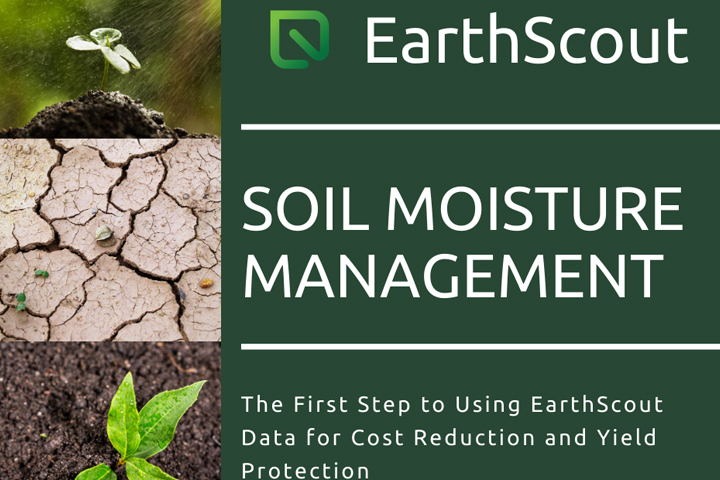There’s a wealth of information available to you through your EarthScout, but how can all that real time and trend data help you grow better crops and run a more profitable operation? One of the ways EarthScout data can make an immediate impact on your bottom line is by helping you manage the frequency of your crop irrigation based on soil moisture data.
Measuring and knowing your water budget (how much water is needed to support the growing crop) can help you save money immediately in irrigated systems. Plants that are stressed from struggling to take up water (or over watered) may not be able to properly transpire and support their photosynthetic systems. This, among other factors, can make or break your production goals at the end of the season. By minimizing plant stress, you can help insure stronger yields in irrigated and dryland production.


With EarthScout, you can determine your soil’s moisture holding capacity across multiple zones. Over a longer measurement period you can find differences in use rate based on the crop growth stage, planting population, or weather conditions to better plan irrigation scheduling or manage dryland agronomic decisions.
Often within the first week of using EarthScout, you can begin analyzing the results of different run times to determine the Field Capacity, predict when water is becoming less available to the crop, and learn how to adjust the irrigation schedule to save water while meeting crop needs.

By using more than one EarthScout in different locations, growers can measure how water availability differences are effecting growth rate (example: rate of growth stage development, height, stem diameter) or reproductive activity (flower initiation timing, number of flowers, loss of reproductive structures) between high and low production areas.
Whether making week to week changes or monitoring differences over the whole season; imagine the changes you can make once you know which areas of your farm require more or less water for high population planting or if the soil has enough moisture during flowering to support the extra yield production from another nitrogen application.
For more information about how EarthScout can help save you time and money, visit EarthScout.com, or contact an EarthScout Growth Coach today at 877-443-7632
Theresa Bayrer (Lead Grow Coach for EarthScout) is a plant physiologist with over 20 years of experience in professional agronomics.
